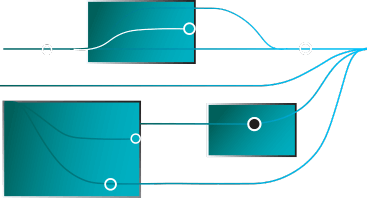10 Benefits of Code Coverage

Code coverage is essential in software development. It's a tool that measures the quantity and quality of your testing. It's straightforward yet powerful, providing clear insights into your code's performance and ensuring no part is overlooked. Code coverage goes beyond mere numbers; it's crucial in crafting reliable and high-quality software, ensuring every piece of your code works exactly as required.
In this article, we get into the top ten benefits of code coverage, showcasing how it's not just a metric but a fundamental part of building reliable, high-quality software.
Enhances Code Quality
Code coverage is not just a metric, it's a mindset. By striving for high coverage, developers are nudged towards writing more modular, cleaner, and testable code. This practice inherently improves the overall quality of the codebase, making it more readable and maintainable. It's a proactive approach to prevent complexity and technical debt, ensuring the codebase remains robust and agile.
Identifies Uncovered Code
One of the stark realities of coding is dead or redundant code. Code coverage tools highlight these overlooked areas, ensuring that every line of code justifies its existence. By pinpointing never executed sections, developers can streamline the codebase, eliminating unnecessary clutter. This improves performance, simplifies maintenance, and enhances the clarity of the code structure.
Facilitates Refactoring
Refactoring is an essential yet often daunting task. High code coverage acts as a safety net, allowing developers to refactor code to improve efficiency and readability without fearing unintended consequences. It ensures that the refactored code aligns with expected outcomes, making improving and optimizing the codebase less risky and more rewarding.
Improves Code Reliability
Code reliability is crucial. Code coverage helps by thoroughly testing the most important parts and functions, making bugs and errors less likely when the software is used. It's like a preventive step that strengthens the code, ensuring the software works well and reliably in different situations. This builds a strong and dependable foundation for your software.
Aids in Risk Management
Risk lurks in every untested line of code in the software development landscape. Code coverage tools help map out the risk terrain, highlighting areas that are under-tested or not tested. By focusing testing efforts on these high-risk zones, teams can mitigate potential issues early in the development cycle, ensuring that the final product is functional and resilient.
Do more with Test Automation
Discover more ways to add ‘low-code no-code‘ test automation in your workflows

Streamlines Debugging
Debugging can be daunting, akin to finding a needle in a haystack. Comprehensive code coverage transforms this chaotic search into a structured process. With most of the code executed during testing, the likelihood of encountering unexpected errors diminishes significantly. Developers can swiftly pinpoint and address issues when issues arise, making the debugging process more efficient and less time-consuming.
Promotes Test-Driven Development (TDD)
Code coverage is the heartbeat of Test-Driven Development (TDD). It ensures that testing is not an afterthought but an integral part of the development process. By writing tests before code, developers are encouraged to consider various scenarios and edge cases from the start. This leads to a more thoughtful design, higher quality code, and a development cycle that is both efficient and effective.
Enhances Developer Confidence
High code coverage means developers can work with confidence. They can update the code or add new features, knowing that tests are in place to protect the current functions. This assurance encourages a creative and bold approach to development. Developers feel free to try new things, confident that their tests will handle any unexpected issues.
Facilitates Continuous Integration
In the fast-paced world of continuous integration, code coverage is the guardian that ensures new code integrates seamlessly with the existing codebase. It acts as a quality gate, ensuring that every commit maintains or improves the current standard of the code. This continuous monitoring and validation streamline the integration process, making it smoother and more reliable.
Provides Insightful Metrics for Improvement
Code coverage metrics are a treasure trove of insights. They provide a clear, quantifiable measure of where the code stands and where it can improve. These metrics guide teams in setting realistic goals, tracking progress, and refining their testing strategies. It's a cycle of improvement that elevates the code and the entire development process.
Conclusion
In software development, code coverage plays an important role, ensuring that every line of code performs its part flawlessly. It's not just about reaching a number, it's about embracing a culture of quality, reliability, and continuous improvement. These benefits outlined here illuminate the multifaceted value of code coverage, showcasing its significance beyond mere metrics. Connect with ACCELQ team to take your code coverage testing to automate the process.
Discover More
 The Age of Microservices Testing
The Age of Microservices Testing
The Age of Microservices Testing
 7 Testing Topics that 95% Testers Miss Out On
7 Testing Topics that 95% Testers Miss Out On



